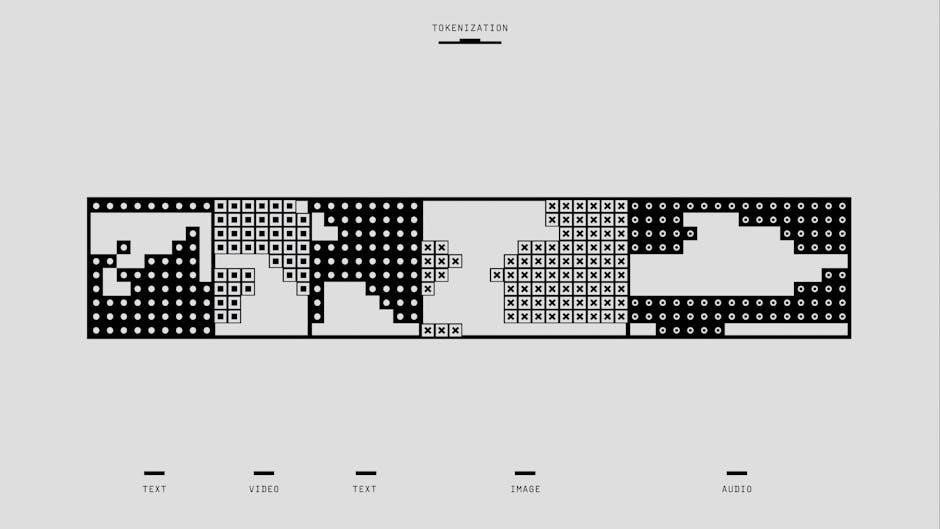Golf Workout Program: A Comprehensive Guide
Elevate your game! This detailed program enhances strength, flexibility, and power, leading to improved performance and a reduced risk of injury on the course.
Golf, often perceived as a leisurely pursuit, demands a surprising level of physical conditioning. While technical skill is paramount, a golfer’s physical capabilities significantly influence swing mechanics, power generation, and overall consistency. Ignoring fitness can lead to diminished performance, increased fatigue, and a higher susceptibility to injuries.

A well-structured fitness program specifically designed for golf addresses the unique physical demands of the sport. It’s not simply about building general strength; it’s about developing functional strength, flexibility, and endurance tailored to the golf swing. This includes enhancing core stability, rotational power, and the ability to maintain balance throughout the swing.
Investing in your physical fitness translates directly to improvements on the course. You’ll experience greater distance, improved accuracy, and the stamina to perform consistently throughout a round. Furthermore, a proactive fitness approach can help prevent common golf-related injuries, allowing you to enjoy the game for years to come.
Understanding the Physical Demands of Golf
The golf swing is a complex, athletic movement requiring a coordinated effort from nearly every muscle group in the body. It’s a dynamic sequence involving rotation, flexion, extension, and stabilization – placing significant stress on the spine, shoulders, and core. Understanding these demands is crucial for designing an effective training program.
Unlike many sports with continuous exertion, golf involves bursts of high-intensity activity followed by periods of relative rest. This intermittent nature requires a blend of strength, power, and endurance. The ability to repeatedly generate force throughout a round is vital for maintaining consistency and preventing fatigue-related errors.
Furthermore, the asymmetrical nature of the swing creates imbalances in muscle development and can contribute to injury. A comprehensive fitness program must address these imbalances, focusing on strengthening supporting muscles and improving overall stability to protect vulnerable joints and tissues.
Swing Mechanics and Muscle Engagement
The golf swing isn’t just about arm speed; it’s a full-body rotation initiated from the ground up. The lower body – glutes, hamstrings, and quads – generates the initial power, transferring energy through the core muscles (obliques, transverse abdominis, and lower back). These muscles act as a stable base for the upper body’s rotational movement.
During the backswing, the latissimus dorsi, rhomboids, and trapezius muscles work to control shoulder rotation and maintain posture. The chest and shoulder muscles then engage during the downswing to deliver clubhead speed. Grip strength, provided by the forearms, is also critical for control.
Effective power transfer relies on sequential muscle activation and efficient kinetic chain movement. Weaknesses in any link of this chain can limit swing speed and accuracy. A targeted workout program should address these specific muscle groups to optimize swing mechanics and maximize performance.
Common Golf-Related Injuries
Golf, despite appearing low-impact, places significant stress on specific body parts. Lower back pain is incredibly common, often stemming from repetitive twisting and hyperextension during the swing. This can lead to muscle strains, ligament sprains, and even disc issues.
“Golfer’s elbow” (medial epicondylitis) and “tennis elbow” (lateral epicondylitis) are frequent overuse injuries affecting the elbow joint due to repetitive arm movements and gripping. Shoulder injuries, including rotator cuff strains and impingement, can also occur from the forceful rotation.
Wrist injuries, such as tendonitis, are prevalent due to the constant impact and pressure from gripping the club. Knee pain and hip problems can arise from the rotational forces and weight shifting. A comprehensive fitness program focusing on strength, flexibility, and proper technique can significantly reduce the risk of these injuries.
Phase 1: Building a Foundation (4-6 Weeks) ⎻ Flexibility & Core
This initial phase prioritizes establishing a solid base of flexibility and core stability, crucial for injury prevention and efficient swing mechanics. We’ll focus on increasing range of motion in key areas like the hips, shoulders, and spine, preparing your body for more demanding exercises.
Core strength isn’t about visible abs; it’s about building a strong, stable center to transfer power effectively. This phase emphasizes anti-rotation exercises to resist unwanted twisting during the swing, alongside foundational stability work. Expect a blend of dynamic and static stretches, alongside controlled core engagement.
Consistency is key during these first weeks. Aim for 3-4 sessions per week, focusing on proper form over intensity. This phase lays the groundwork for future power development and ensures your body can handle the stresses of the golf swing.
Dynamic Stretching for Golfers
Dynamic stretches prepare your muscles for the specific movements of the golf swing, increasing blood flow and range of motion. Unlike static stretches, these involve controlled movements through a full range of motion, mimicking the actions you’ll perform on the course.
Key exercises include torso twists, leg swings (forward, backward, and lateral), arm circles, and hip rotations. These movements enhance flexibility in the spine, hips, shoulders, and legs – all critical areas for a powerful and consistent swing. Focus on controlled, fluid motions, avoiding bouncing or jerky movements.
Perform these stretches before each round or practice session. A typical routine should last 5-10 minutes, focusing on the areas most involved in the golf swing. Prioritize quality of movement over quantity, ensuring each stretch is performed with proper form and control.
Static Stretching for Golfers – Post-Round Recovery
Static stretching is crucial for post-round recovery, helping to reduce muscle soreness and improve flexibility. Unlike dynamic stretches, static stretches involve holding a stretch in a challenging, yet comfortable, position for a period of time – typically 20-30 seconds.
Focus on major muscle groups used during the golf swing, including the hamstrings, hip flexors, glutes, shoulders, and back. Examples include hamstring stretches, quad stretches, triceps stretches, and torso twists. Remember to breathe deeply and relax into each stretch.
Perform these stretches after your round or practice session, when your muscles are warm; Holding each stretch for the recommended duration allows the muscles to lengthen and recover, promoting flexibility and preventing stiffness. Consistent static stretching aids in long-term injury prevention.
Core Strengthening Exercises – Anti-Rotation Focus

A strong core is paramount for golf, and resisting rotational forces is key. Unlike simply twisting, anti-rotation exercises build stability and prevent energy leaks during the swing. These exercises challenge your core to maintain a stable spine while your limbs move.
Effective exercises include Paloff presses (using a resistance band or cable machine), where you resist the pull of the band while maintaining a stable posture. Another excellent choice is the single-arm farmer’s carry, demanding core engagement to prevent lateral flexion.
Focus on controlled movements and proper form. Begin with lighter resistance and gradually increase it as your strength improves. Incorporate 3 sets of 10-12 repetitions for each exercise, 2-3 times per week. A stable core translates directly to a more powerful and consistent golf swing.
Core Stability Exercises – Plank Variations
Planks are foundational for core stability, but variations increase the challenge and target different muscle groups crucial for golf. Standard planks build isometric strength, while dynamic variations enhance functional fitness.
Try side planks to strengthen obliques, vital for resisting lateral flexion during the swing. Incorporate plank with arm/leg lifts to challenge stability further. For an advanced option, perform plank jacks or renegade rows (with dumbbells).
Maintain proper form: a straight line from head to heels, engaging your glutes and core. Avoid sagging hips or a rounded back. Aim for 3 sets, holding each plank variation for 30-60 seconds, or completing 10-15 repetitions for dynamic variations. Consistent plank training builds a resilient core, improving power transfer and preventing injuries.
Phase 2: Power Development (4-6 Weeks) ⸺ Strength & Explosiveness
Transitioning from foundational strength, this phase focuses on generating explosive power – essential for maximizing clubhead speed and distance. We’ll build upon the core stability established in Phase 1, adding heavier loads and faster movements.
Expect a shift towards compound exercises like squats, lunges, and deadlifts, performed with increased intensity. Upper body work will emphasize rotational power, mimicking the golf swing. Plyometrics – jump training – will be introduced to develop reactive strength.
Prioritize proper form over lifting heavy weight. This phase requires careful progression to avoid injury. Focus on controlled movements with a full range of motion. Remember to warm up thoroughly before each workout and cool down afterward. This phase is about translating strength into usable power on the course.
Lower Body Strength Training – Squats, Lunges, Deadlifts
A powerful golf swing originates from the ground up, making lower body strength paramount. This section details exercises targeting key muscle groups – glutes, hamstrings, and quads – crucial for generating power and stability.
Squats (back, front, goblet) build overall lower body strength. Lunges (forward, reverse, lateral) improve balance and single-leg stability, mirroring the swing’s weight shift. Deadlifts (conventional, Romanian) enhance posterior chain strength, vital for hip hinge mechanics.
Begin with bodyweight variations, progressing to weighted versions as strength increases. Focus on maintaining proper form: a neutral spine, controlled descent, and explosive ascent. Incorporate 3-4 sets of 8-12 repetitions for each exercise. Prioritize quality over quantity, and listen to your body.
Upper Body Strength Training – Rotational Power Exercises
Generating swing speed isn’t solely about brute force; rotational power is key. This section focuses on exercises that build strength and explosiveness through a rotational plane, mimicking the golf swing’s motion.
Medicine ball throws (rotational, overhead) develop explosive power in the core and upper body. Cable rotations (standing, kneeling) build rotational strength and stability. Resistance band pull-aparts improve scapular control and shoulder stability, crucial for preventing injuries.
Focus on controlled movements with a slight pause at the peak of rotation. Emphasize core engagement throughout each exercise. Perform 3-4 sets of 10-15 repetitions. Remember to maintain proper form to maximize effectiveness and minimize risk. Gradually increase resistance as you get stronger.

Plyometrics for Golf – Jump Training & Explosive Movements
Plyometrics are vital for developing the explosive power needed to generate clubhead speed. These exercises utilize the stretch-shortening cycle, enhancing your ability to rapidly switch from eccentric to concentric muscle contractions – mirroring the golf swing’s acceleration phase.
Box jumps (various heights) build lower body power. Lateral bounds improve side-to-side explosiveness, important for stability. Depth jumps (controlled landings) enhance reactive strength. Medicine ball slams (overhead, rotational) develop full-body power.
Start with low-intensity plyometrics and gradually increase the difficulty. Focus on proper landing mechanics to minimize joint stress. Perform 2-3 sets of 8-12 repetitions. Allow adequate rest between sets. Prioritize quality over quantity; controlled, explosive movements are key.
Grip Strength & Forearm Conditioning
A strong grip is fundamental for controlling the club and maximizing power transfer. Neglecting forearm conditioning can lead to fatigue and inconsistencies during a round. This section focuses on exercises to build endurance and strength in your hands, wrists, and forearms.
Farmer’s walks (holding heavy dumbbells) build overall grip strength and forearm endurance. Wrist curls (palms up and down) target the flexors and extensors. Reverse curls specifically strengthen the forearm muscles. Grip strengtheners (hand grippers) provide targeted resistance.
Incorporate these exercises 2-3 times per week. Start with lighter weights and gradually increase the resistance. Focus on controlled movements and avoid overtraining. Remember, a balanced approach is crucial – strengthening both the flexors and extensors prevents imbalances.
Phase 3: Golf-Specific Conditioning (Ongoing) ⎻ Integration & Maintenance
This phase bridges the gap between general fitness and the unique demands of the golf swing. It’s about refining movements, enhancing coordination, and maintaining the gains achieved in previous phases. Consistency is key – this isn’t a temporary fix, but a long-term commitment to performance.
Focus shifts to integrating strength and power into swing mechanics. Drills should mimic the golf motion, emphasizing rotational power and efficient energy transfer. Regular practice of these drills reinforces proper technique and builds muscle memory. This phase also prioritizes injury prevention through continued flexibility and stability work.
Think of this as ‘maintenance’ – 2-3 sessions per week are sufficient to stay sharp. Adjust the intensity based on your playing schedule and listen to your body. Prioritize quality over quantity, ensuring each repetition is performed with proper form.
Rotational Power Drills with Resistance Bands
Resistance bands are invaluable for developing rotational power, mimicking the forces experienced during the golf swing. These drills enhance core stability and improve the sequencing of muscle activation, crucial for maximizing clubhead speed. Begin with lighter resistance and gradually increase it as strength improves.

Key drills include band rotations – anchoring the band and rotating the torso while maintaining a stable lower body. Another effective exercise is the “wood chop,” simulating the downswing motion. Focus on controlled movements and engaging the core throughout each repetition. Visualize the golf swing to reinforce proper technique.
Perform 3 sets of 10-12 repetitions for each drill, 2-3 times per week. Prioritize quality over quantity, ensuring proper form to avoid injury. These drills are best incorporated into Phase 3, after a solid foundation of strength and stability has been established.

Balance and Proprioception Training
Maintaining balance throughout the golf swing is paramount for consistent contact and power. Proprioception – your body’s awareness of its position in space – plays a vital role. Training these elements enhances stability and improves your ability to react to uneven lies.
Exercises include single-leg stands, both with eyes open and closed, progressing to unstable surfaces like balance boards or foam pads. Incorporate dynamic movements, such as reaching in different directions while maintaining balance. Wobble board exercises are also highly beneficial, challenging your ankle and core stability.
Aim for 3 sets of 30-60 seconds per exercise, 2-3 times weekly. Focus on controlled movements and engaging your core. These drills are particularly important in Phase 3, integrating balance into your golf-specific conditioning. Consistent practice will translate to improved stability on the course.
Speed and Agility Drills for Golf
Golf isn’t solely about power; quickness and agility are crucial for efficient movement and responding to the dynamic demands of the swing. These drills improve footwork, reaction time, and rotational speed, contributing to a more powerful and controlled swing.
Implement ladder drills focusing on quick feet and coordination. Cone drills, such as shuttle runs and figure-eight patterns, enhance agility and change-of-direction speed. Medicine ball throws, emphasizing rotational power, are also effective. Consider incorporating short sprints with a focus on explosive first steps.

Perform 2-3 sets of each drill, with adequate rest between sets, 2-3 times per week. Prioritize proper form over speed initially, gradually increasing intensity as your fitness improves. These drills are best suited for Phase 3, complementing your golf-specific conditioning.
Warm-up Routine for Before a Round
A proper warm-up is paramount for preparing your body for the stresses of a golf round, minimizing injury risk, and maximizing performance. This routine should be dynamic, focusing on movements that mimic the golf swing and increase blood flow to key muscle groups.
Begin with 5-10 minutes of light cardio, like brisk walking or jogging. Follow this with dynamic stretches, including torso twists, leg swings, and arm circles. Incorporate golf-specific movements like practice swings, gradually increasing range of motion. Include exercises targeting core activation and shoulder mobility.

Spend approximately 15-20 minutes on your warm-up, progressing from general movements to more golf-specific drills. This prepares your muscles, joints, and nervous system for the demands of the course, ensuring you’re ready to perform at your best from the first tee.
Nutrition for Golf Performance
Optimal nutrition is a cornerstone of any successful golf performance plan, often overlooked despite its significant impact. Fueling your body correctly provides sustained energy, enhances focus, and aids in recovery, allowing you to maintain peak performance throughout a round and during training.
Prioritize complex carbohydrates for sustained energy release, such as whole grains, fruits, and vegetables. Include lean protein sources to support muscle repair and recovery. Healthy fats are also crucial for overall health and energy levels. Avoid processed foods, sugary drinks, and excessive caffeine.
Strategic timing of nutrient intake is key. Consume a balanced meal 2-3 hours before your round, and snack on easily digestible foods during play to maintain energy levels. Post-round recovery nutrition should focus on replenishing glycogen stores and repairing muscle tissue.
Hydration Strategies for Golfers
Maintaining proper hydration is absolutely critical for golfers, often underestimated due to the seemingly moderate exertion. Even mild dehydration can significantly impair performance, leading to fatigue, decreased concentration, and reduced muscle power – all detrimental to your game.
Begin hydrating well before your round, drinking water consistently throughout the day. During play, aim to drink fluids every 2-3 holes, even if you don’t feel thirsty. Consider electrolyte-rich beverages, especially in hot and humid conditions, to replace lost sodium and potassium.
Avoid sugary drinks and excessive caffeine, as they can lead to dehydration. Monitor your urine color – pale yellow indicates adequate hydration, while dark yellow suggests you need to drink more. Post-round rehydration is equally important for recovery.
Fueling Your Body On and Off the Course
Optimal nutrition is paramount for golfers seeking peak performance and sustained energy throughout a round. A balanced diet, rich in complex carbohydrates, lean proteins, and healthy fats, provides the necessary fuel for both physical exertion and mental focus.
Prior to a round, focus on carbohydrate-rich foods like oatmeal, whole-wheat toast, or a banana to provide sustained energy. During play, opt for easily digestible snacks such as energy bars, fruit, or trail mix to maintain blood sugar levels.
Post-round recovery requires replenishing glycogen stores and repairing muscle tissue. Consume a meal containing both carbohydrates and protein within an hour of finishing your round. Consistent, healthy eating habits off the course are equally vital for supporting your training and overall well-being.
Recovery and Injury Prevention
Proactive recovery is crucial for golfers to maintain performance and minimize the risk of injury. Implementing consistent recovery strategies allows your body to adapt to the demands of training and playing, preventing overuse injuries and promoting long-term health.
Prioritize active recovery, such as light walking or stretching, on rest days. Incorporate regular foam rolling and self-myofascial release techniques to address muscle tightness and improve flexibility.
Adequate sleep (7-9 hours) is essential for muscle repair and recovery. Listen to your body and don’t push through pain. Addressing minor discomfort early can prevent it from escalating into a more serious injury. A well-rounded approach to recovery ensures you stay on the course and playing your best.

Foam Rolling and Self-Myofascial Release
Self-myofascial release (SMR), commonly using a foam roller, is a fantastic tool for golfers to improve muscle flexibility, reduce soreness, and enhance recovery. Targeting key muscle groups used in the golf swing – like the glutes, hamstrings, quads, back, and shoulders – can significantly improve range of motion and prevent injuries.
Apply moderate pressure to tender areas, holding for 30-60 seconds. Slow, controlled movements are key; avoid rolling directly over joints. Focus on areas that feel tight or restricted.
Regular foam rolling, even just 10-15 minutes several times a week, can dramatically improve tissue quality and prepare your body for optimal performance. It’s a simple yet effective addition to any golfer’s recovery routine, promoting flexibility and reducing the risk of strains.
Cool-down Routine for After a Round or Workout
A proper cool-down is crucial for transitioning your body from exertion back to a resting state, minimizing muscle soreness and promoting recovery. After a round of golf or a dedicated workout, dedicate 10-15 minutes to gentle movements and static stretching.
Include stretches targeting the major muscle groups used during golf: hamstrings, glutes, lower back, shoulders, and chest. Hold each stretch for 30 seconds, focusing on deep, controlled breathing. Gentle torso twists and arm circles can also aid in recovery.
Prioritizing a cool-down helps flush out metabolic waste, reduces muscle tension, and improves flexibility, setting the stage for your next performance. Don’t skip this vital step – your body will thank you!
Sample Weekly Workout Schedule
This schedule provides a framework; adjust based on your fitness level and available time. Remember to warm up before each session and cool down afterward. Listen to your body and prioritize rest when needed.
Monday: Lower Body Strength (Squats, Lunges, Deadlifts – 3 sets of 8-12 reps). Tuesday: Core & Flexibility (Plank variations, dynamic/static stretching – 30-45 minutes). Wednesday: Active Recovery (Light cardio, foam rolling – 30 minutes).
Thursday: Upper Body & Rotational Power (Resistance band exercises, dumbbell rotations – 3 sets of 10-15 reps). Friday: Plyometrics & Speed (Jump squats, agility drills – 20-30 minutes). Saturday/Sunday: Golf & Rest. Consistency is key for optimal results!
Resources & Further Learning
To continue your golf fitness journey, explore these valuable resources. Websites like Stack & Tilt Golf and Titleist Performance Institute (TPI) offer in-depth articles and training programs. Consider investing in a SuperSpeed Golf training system for swing speed gains.
For equipment, brands like SKLZ and Bionic offer specialized golf fitness tools. YouTube channels dedicated to golf fitness, such as Rick Shiels Golf and George Gankas Golf, provide instructional videos.
Finding a qualified golf fitness professional (TPI certified) can provide personalized guidance. Local gyms and golf academies often have trainers specializing in golf-specific conditioning. Remember to prioritize credible sources and tailor your learning to your individual needs and goals for lasting improvement.
Recommended Golf Fitness Equipment
To maximize your training, consider these equipment options. Resistance bands are versatile for rotational power drills and warm-ups. A stability ball enhances core engagement and balance training. Medicine balls are excellent for explosive power development and rotational movements.
For flexibility, a foam roller aids in self-myofascial release and muscle recovery. Weighted clubs build swing speed and strength. Speed stacks improve hand-eye coordination and reaction time.
Invest in a good quality yoga mat for stretching and floor exercises. Adjustable dumbbells offer progressive resistance for strength training. Don’t forget a reliable heart rate monitor to track intensity and optimize your workouts. Prioritize quality and durability for long-term use.
Finding a Qualified Golf Fitness Professional
Seeking expert guidance can significantly accelerate your progress. Look for professionals with certifications like Titleist Performance Institute (TPI), Gray Institute, or credentials from the National Strength and Conditioning Association (NSCA). Experience working specifically with golfers is crucial.
Inquire about their assessment process – a thorough evaluation of your movement patterns, flexibility, and strength is essential. A good professional will tailor a program to your specific needs and limitations, not a generic routine.
Check references and read reviews. Don’t hesitate to ask about their success stories and approach to injury prevention. A qualified professional will prioritize long-term health and performance, not just quick fixes. Investing in expert coaching is an investment in your game.


























































































